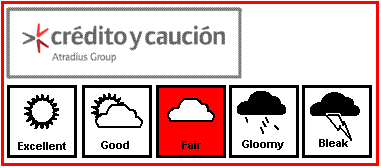| The Norwegian economy has livened up considerably since the summer, due mainly to stronger domestic demand. According to Statistics Norway, GDP for mainland Norway increased 0.9% year-on-year in Q3 of 2010 after 0.5% growth rates in the two previous quarters. Production increased moderately in manufacturing [1.9%] and construction [1.7%], while household consumption rose 1.3% after a slight decrease in Q2. Exports of traditional goods rose 2.2%, with fish/fish products and chemicals the major contributors. Unemployment remained unchanged at 3.5%, but this is still low compared to other countries. 
With moderate growth in the third quarter, Norwegian industrial managers assess the short term outlook to be positive. The shipbuilding sector has improved markedly since the beginning of 2010, thanks largely to a governmental support package launched in April, which included increased guarantee capacity, extended loan facilities, new public orders and other subsidies. Having seen severe price reductions and a record number of bankruptcies in 2009, the metal sector has recovered appreciably, with an increase in orders and in the price of metal products. However, the paper sector is still struggling as a result of worldwide overcapacity and price pressures. The important salmon sector continues to profit from the salmon virus epidemic in Chile. An 8% decrease in bankruptcies in Q3 of 2010 After the record number of bankruptcies in 2009, the trend has reversed in 2010. According to Statistics Norway, there were 949 bankruptcies in Q3: an 8% year-on-year decrease. Of these, 702 related to business failures [excluding sole proprietorships], with one in three of these in the wholesale and retail trade sectors. A third of the sole proprietorship and personal bankruptcies related to the construction sector. However, in September the number of bankruptcies was slightly above that of September 2009, suggesting that the decreasing trend may be levelling off. Winter started early in 2010 and that isnt good news for the construction industry, already hit by 2009 adverse weather conditions. In October 2010, the Expected Default Frequency [EDF] indicator for listed companies in Norway stood at 82 basis points: 237 points lower than at its peak in March 2009, but still more than 50 basis points higher than in summer 2008, i.e. before the credit crisis took hold. Short term forecasts for the Norwegian economy are positive, as increasing business investments and higher private consumption are expected, thanks to Christmas activity, lower interest rates and real income growth. Exports will also pick up, but the strength of the Norwegian crown may have a subduing effect on the competitiveness of Norwegian businesses. The Economist Intelligence Unit forecasts GDP growth of 1.1% in 2010 and 1.5% in 2011. |
